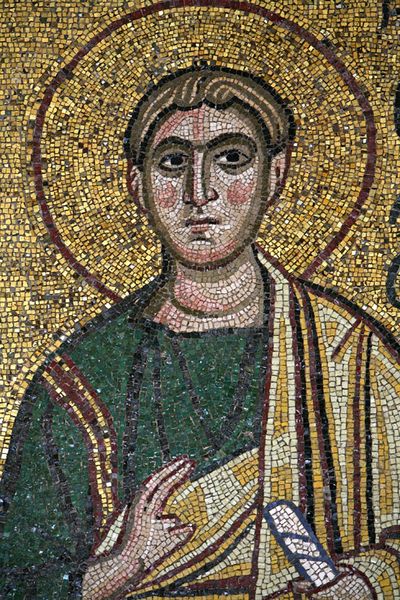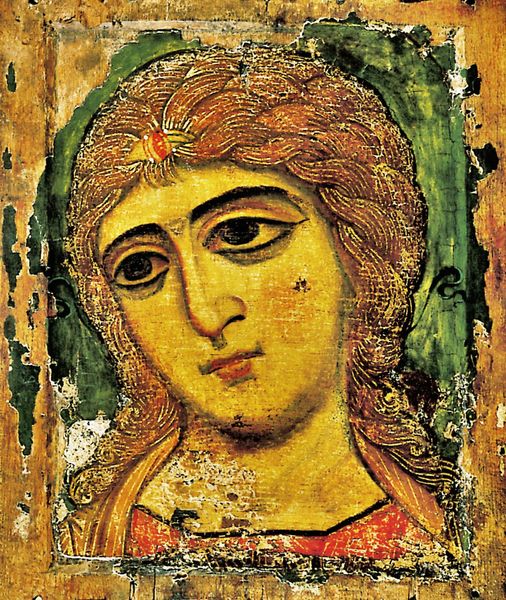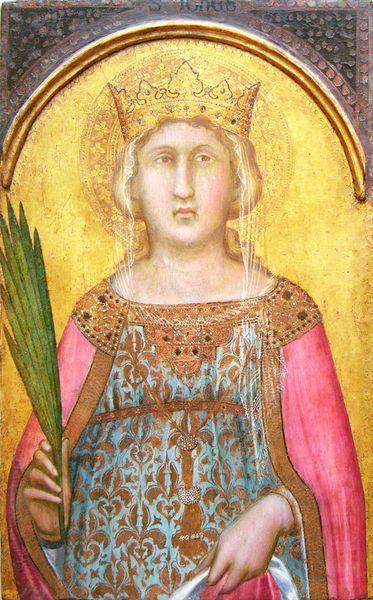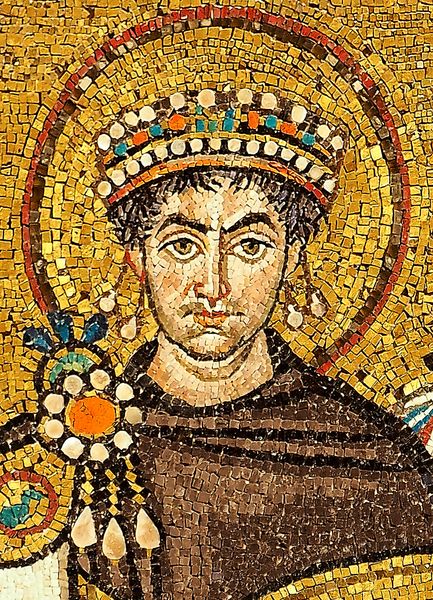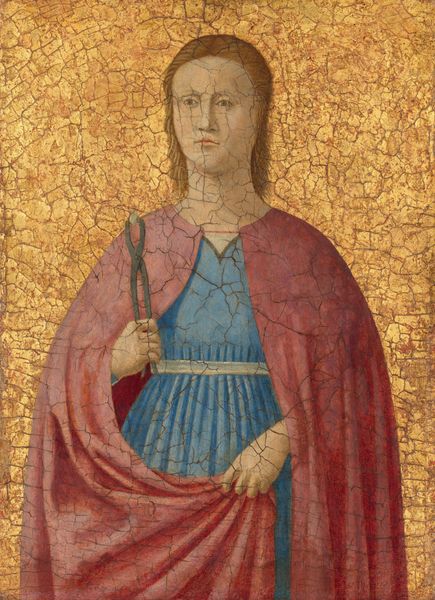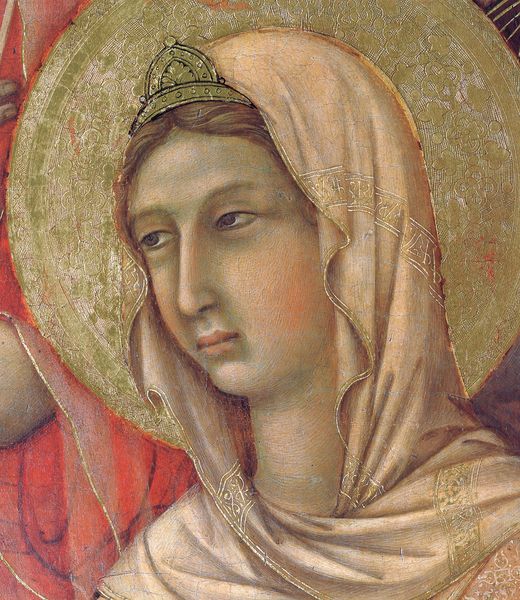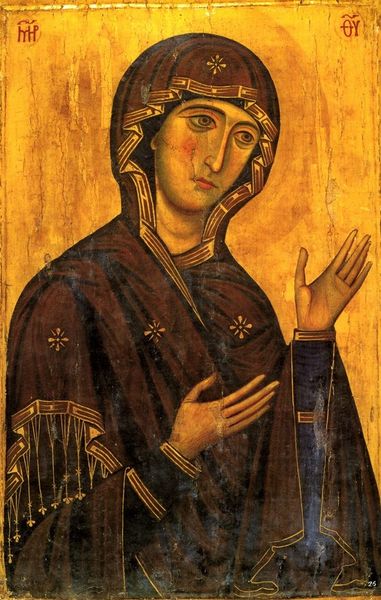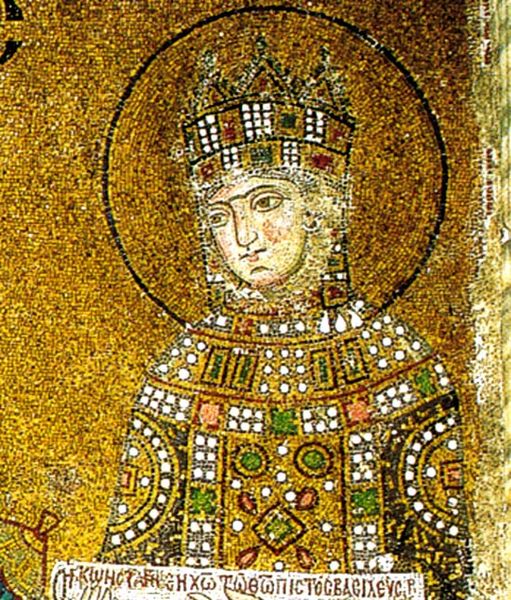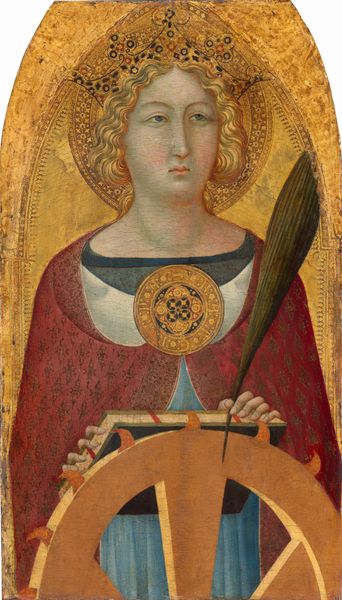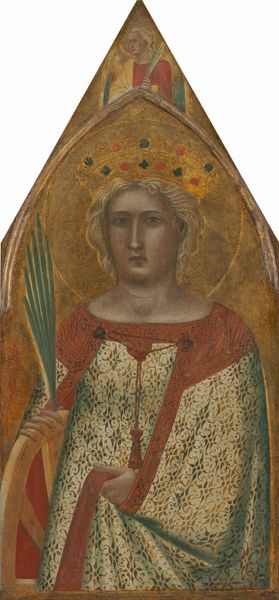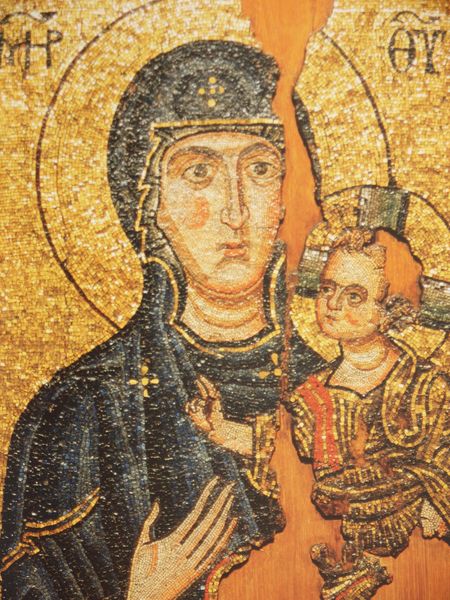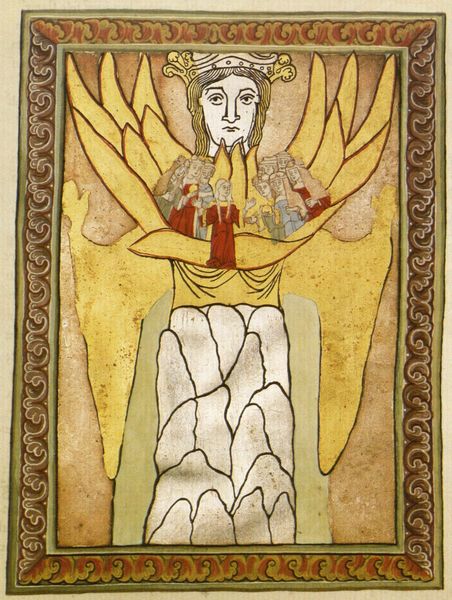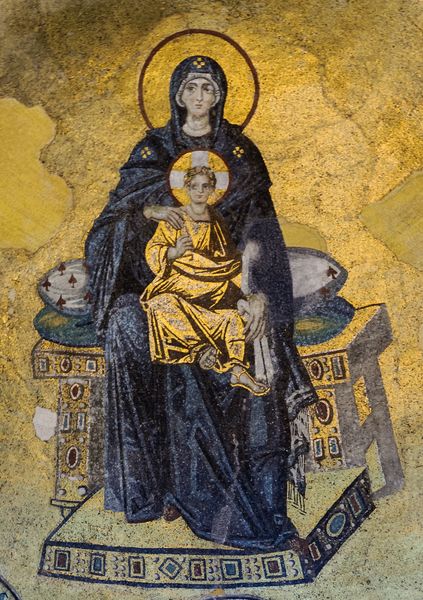
mosaic
#
portrait
#
mosaic
#
byzantine-art
#
medieval
#
figuration
#
traditional architecture
#
tile art
#
decorative-art
#
decorative art
Copyright: Public domain
Curator: The shimmering gold immediately catches the eye. It is impossible to look away from the opulence! Editor: Quite right. What you're looking at is the “Mosaic of Theodora,” created around 547 AD. It resides in the Basilica of San Vitale, Ravenna, and is one of the most famed examples of Byzantine mosaic art. Curator: I find myself marveling at the tesserae - each painstakingly placed to build this grand image. Imagine the workforce, the organization, the sheer volume of colored glass or stone required to complete this portrait, which really elevates it. We need to remember that mosaics are labor and investment intensive. Editor: Absolutely, and consider the socio-political climate. Theodora was an Empress, with enormous power and influence. Placing her image in such a prominent religious site—funded by the state, mind you—serves as a potent visual statement of her authority. Art and power so very clearly intertwined. Curator: Indeed, every jewel and textile represented here underscores both her worldly and spiritual influence. This mosaic and others like it aren’t just decoration, they are tangible assets contributing to the display of political, social and artistic capital. Consider the act of commissioning it. The cost of the mosaic itself! Editor: Yes, its placement within the apse, adjacent to her husband Justinian, firmly establishes their divine right to rule. Note how the composition frames her, isolating her as an almost god-like figure. A key image within the evolving visual language of Byzantine power. Curator: Looking at the texture again... the reflective surface, which moves in a subtle shimmer with any shifts in light. How would its reception change as it began its life and aged? Editor: A fascinating point. The light, the positioning, the religious and political context, are essential for decoding the meanings layered within this truly remarkable portrait. The work really operates as a complex symbolic performance. Curator: Indeed, a dance of materials, labor, and strategic representation to solidify Theodora’s legacy. Editor: And understanding those contexts unlocks the artwork, allowing us to glimpse both her power and the system she inhabited.
Comments
No comments
Be the first to comment and join the conversation on the ultimate creative platform.
